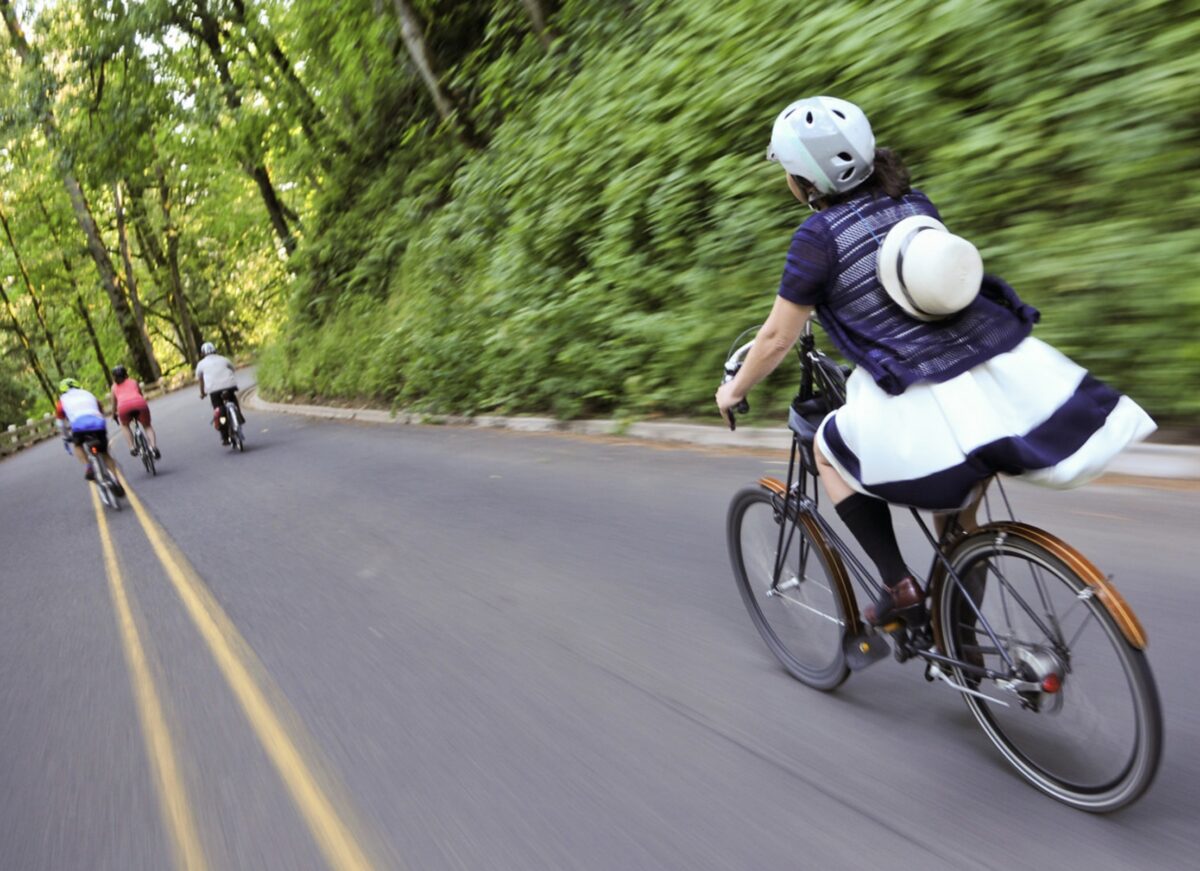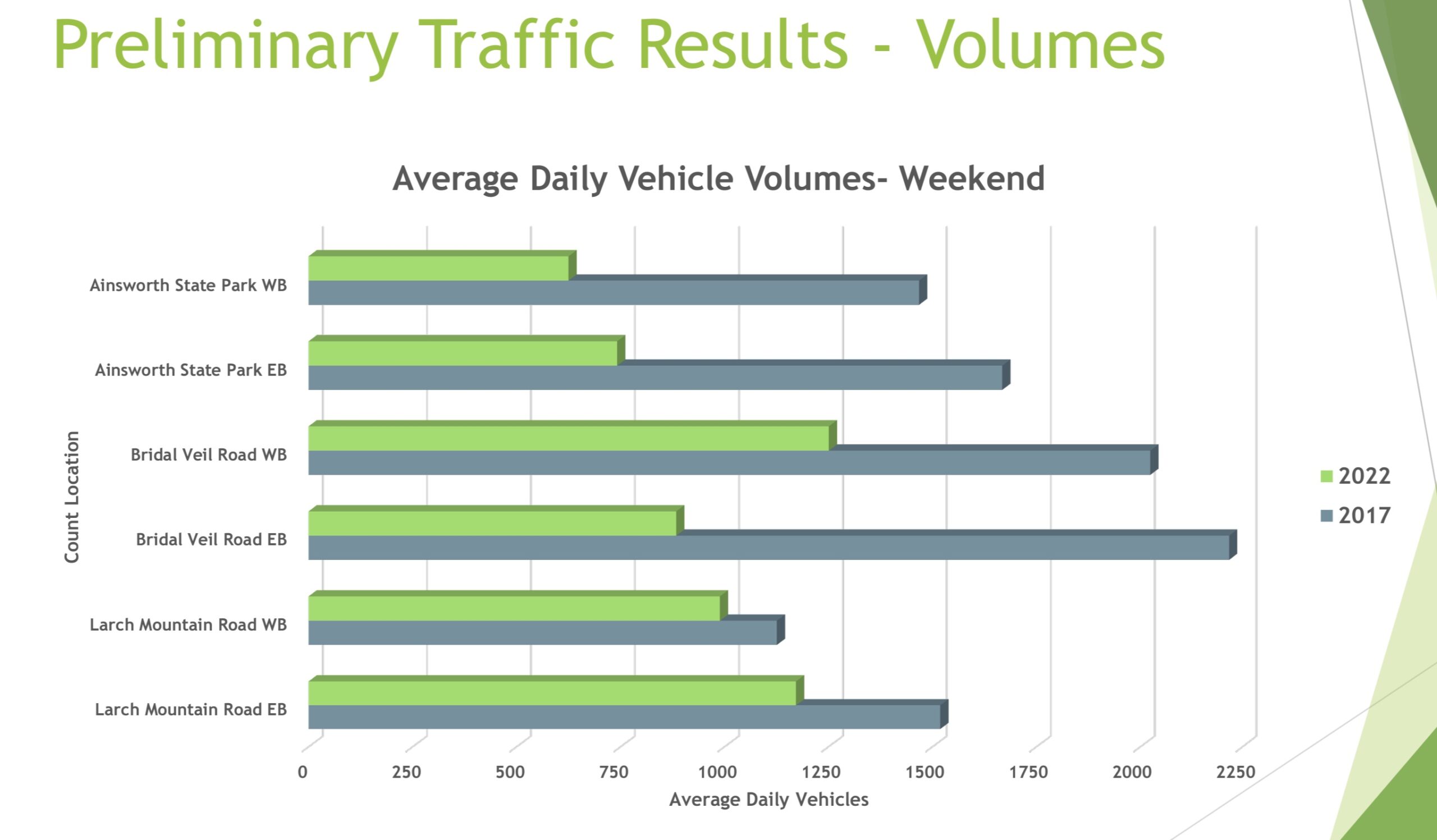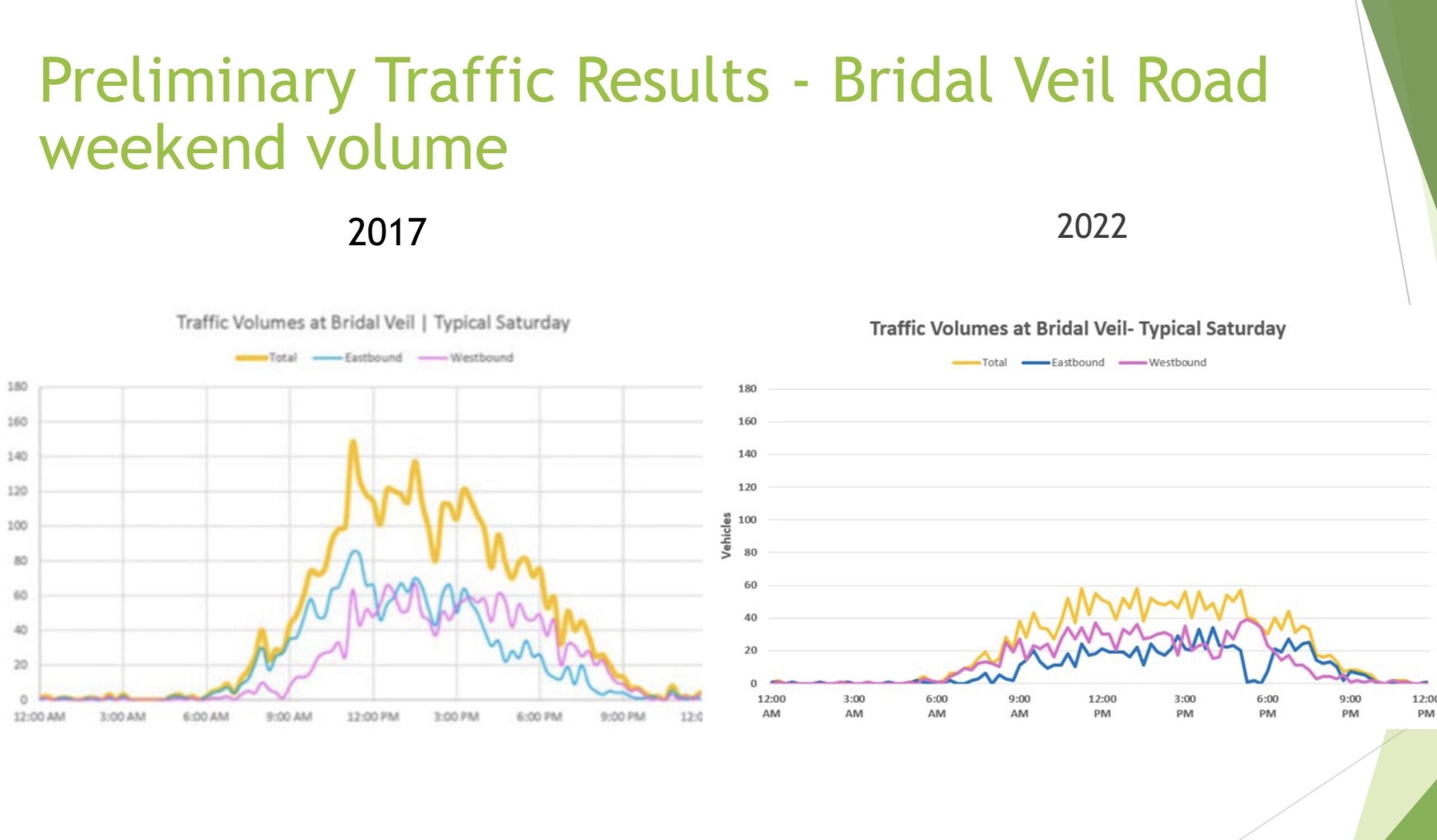
“I feel confident saying that we met our goals of improving visitor experience.”
– Terra Lingley, ODOT
State of Oregon officials say a permit system created to reduce car use in the Columbia River Gorge this past summer was a success and is very likely to return in 2023.
The timed-access permit system was required for entry into an approximately nine mile stretch of the Historic Columbia River Highway between Vista House and Ainsworth State Park from May 24th to September 5th. The permits were free at staffed kiosks, but those who got them online were charged a $2 fee. People who used transit or bicycles to access the highway did not need a permit.
The system was implemented to reduce congestion along the popular “Waterfall Corridor.” A draft evaluation of the program was shared at the September 15th meeting of the Historic Columbia River Highway Advisory Committee.
Oregon Department of Transportation Columbia River Gorge National Scenic Area Coordinator Terra Lingley told the committee that about 130,000 permits were issued. In a presentation to committee members, Lingley said there was a mix of feedback to the program, but overall it worked well. “I feel confident saying that we met our goals of improving visitor experience,” she said.
While there was some confusion about the program and a lot of drivers were rude to State Parks staff, ODOT logged numerous comments from visitors who liked the new system. The permit system received an average of four out of five stars across over 1,700 ratings on Recreation.gov. Car traffic overall was also significantly reduced over previous years.
According to ODOT data, the average daily traffic this year compared to 2017 was much lower. In the eastbound direction at Bridal Veil Falls, for example, there were about 2,200 cars each day in 2017. That number fell to about 850 cars this year. And because a limited number of permits were released each hour, the system leveled out the number of car-using visitors and reduced the problematic peak of years past (see graphics above).
Oregon Parks and Recreation Division Manager Clay Courtright echoed Lingley’s perception of how it went. “I think folks embraced it to a large degree. It did reduce traffic and people were largely happy,” While Courtright said some people were angry that they had a permit but could still not find parking (the permit didn’t guarantee parking), he said, “For the people that could find parking spaces, there was a resounding and repeated message that the visitor experience was very good.”
Courtright and Lingley shared stories about people who disobeyed the rules and/or who were rude to permit staff. “It was rough on staff,” Courtright said. And Lingley said a gas station employee in Cascade Locks was telling people to lie about their plans. Since it’s a state highway, Lingley said, they weren’t allowed to prohibit through traffic. “So some folks would say they just wanted to drive through, but we’d see them park and visit.”
“I feel like I owe Parks staff a free therapy session,” Lingley added.
The program cost the state around $1 million for the three months. Lingley said that’s not sustainable and they’ll need to find a dedicated funding source in the future.
Look for improved shuttle and transit service next year along with a few other tweaks. For more on the program, check out ODOT’s website.




